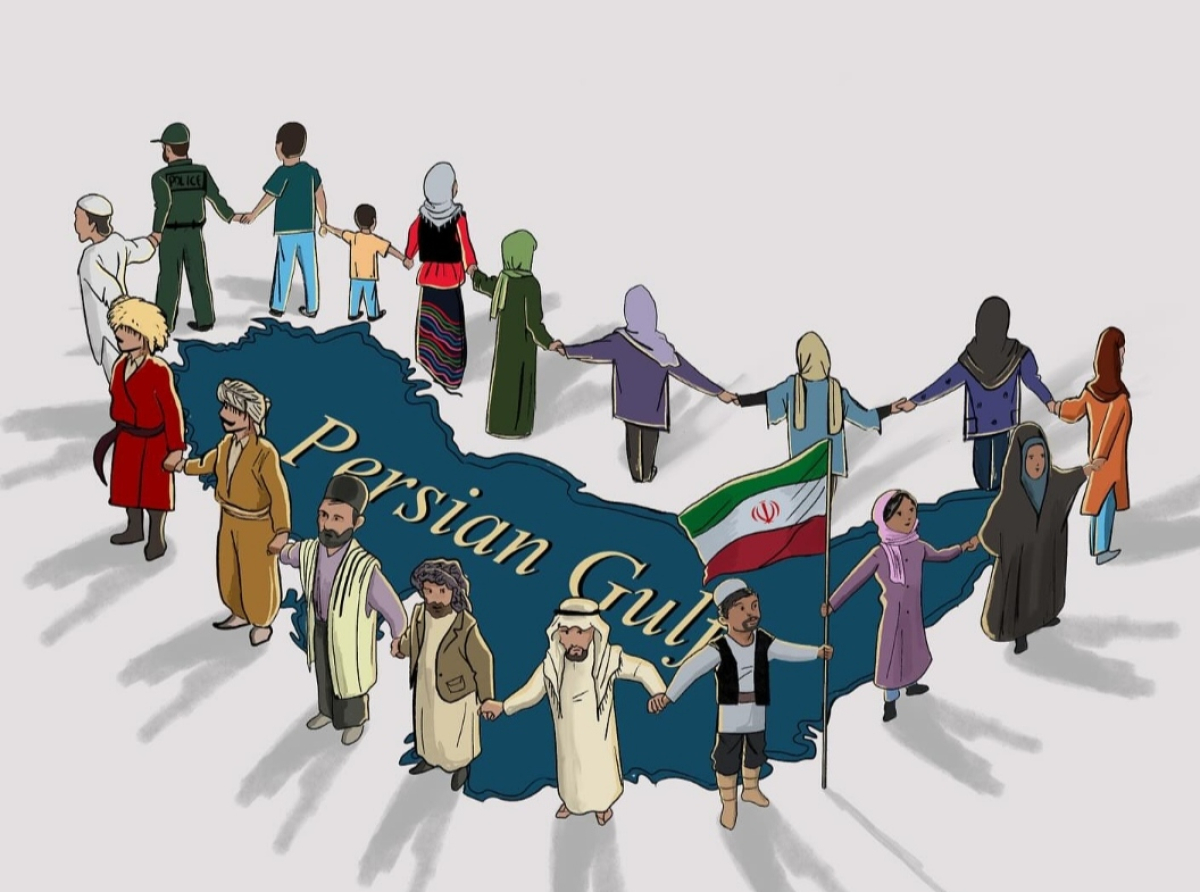The Persian Gulf is a coastal sea in Western Asia and the Middle East, located along the Sea of Oman and between Iran and the Arabian Peninsula. The Persian Gulf has an area of 241,000 square kilometers, is about 990 kilometers long, and ranges in width from 55 to 340 kilometers (in different parts). The Persian Gulf opens to the Indian Ocean and the Arabian Sea from the east through the Strait of Hormuz and the Sea of Oman, and ends in the Arvand-Rud River delta, which is the result of the confluence of the Tigris and Euphrates rivers and the Karun River joining it. The depth of the Persian Gulf at its deepest point is about 90 meters. The historical name of this body of water has always been linked to the names of the land of Iran and has been translated or equivalent to "Persian Gulf, Persian Sea and Persian Sea" in various languages. Also, in all international organizations, the official name is "Persian Gulf", the International Hydrographic Organization uses the name "Iranian Gulf", which it considers equivalent to (Persian Gulf), for this gulf. In the past decades, some Arab countries have tried to distort the name of the Persian Gulf by calling it the Arabian Gulf or simply the Gulf. The Persian Gulf is in the Persian Gulf basin, which has a Cenozoic origin and is related to the subduction of the Arabian plate under the Zagros mountain range. The current drainage of this basin began 15,000 years ago due to the rise in sea levels from the Holocene glacial retreat. The Persian Gulf and its synonyms in other languages are the most authentic names and names left over from the oldest sources, which have been used continuously in all languages and world literature since centuries BC and are linked to Pars, Fars, Iran and Ajam - the names of Iran - and their equivalents in other languages. During the years 550 to 330 BC, coinciding with the rule of the Achaemenid Empire over the Middle East region, especially the entire Persian Gulf and some parts of the Arabian Peninsula, the name Persian Sea is widely seen in collected written texts.
The Persian Gulf is important from various political, economic, cultural and security aspects. The Persian Gulf has an estimated 565 billion barrels of oil reserves, which constitutes 63% of the world's total known reserves of 596.5 billion barrels. The Persian Gulf has become a wealthy region due to its vast oil and gas reserves and mines. On October 10, 2018, the World Intellectual Property Organization (WIPO) registered the name of the Persian Gulf with the prefix "Pearl" as the property of Iran. From now on, no government, country, or organization can name this Gulf by any other name. A history professor at Shahid Beheshti University said about the age and history of the name Persian Gulf: This word was introduced during the time of Cyrus the Great, and the word Pars is derived from Parse, which was given to the Iranian Empire and the inhabitants there were Persians. Bigdali continued: Until World War II, all official world sources used the name Persian Gulf, and the media and foreign ministries of all Western countries also used the name Persian Gulf.
Translator Collector: Faeghe Ebrahimpour

 En
En  Fa
Fa 